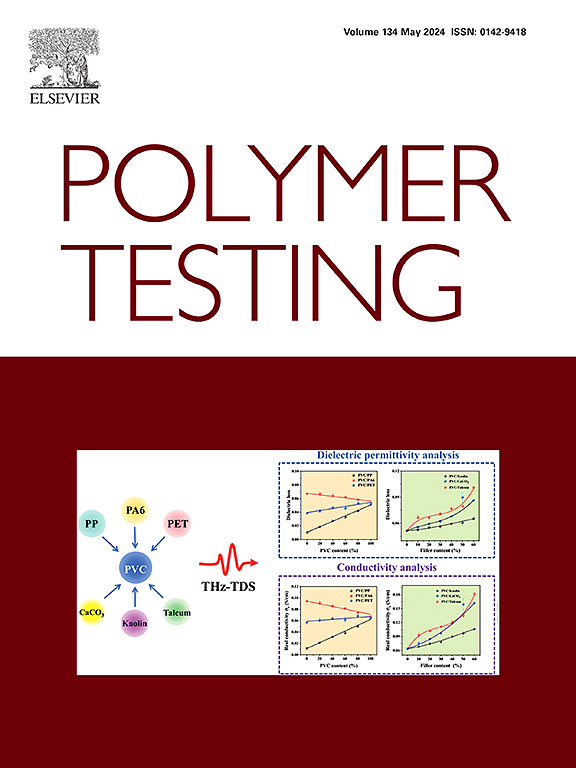Evaluating cyclic creep behavior of silicone-based thermoplastic elastomers for morphing control surface applications
IF 5
2区 材料科学
Q1 MATERIALS SCIENCE, CHARACTERIZATION & TESTING
引用次数: 0
Abstract
The development of morphing control surfaces in automotive applications has necessitated the development of advanced elastomeric materials with high resilience and elastic recovery under cyclic deformation. In this study, the suitability of silicone-based thermoplastic vulcanizate (TPV-Si) and silicone-based thermoplastic polyurethane (TPU-Si) materials as morphing surface skins was investigated. A new cyclic creep test method for simulating real-world operational conditions for morphing control surfaces was proposed to evaluate the performance of these materials. The Norton-Bailey model was employed to analyze the test results to characterize the creep behavior across different strain levels, focusing on the primary and secondary deformation phases. The results revealed distinct differences in the elastic recovery capabilities and durability of TPV-Si and TPU-Si, offering insights into material selection for enhanced durability in morphing-controlled surface applications. This analysis highlighted the superior performance of TPU-Si under high-strain conditions, making it a promising candidate for automotive morphing technology.
求助全文
约1分钟内获得全文
求助全文
来源期刊

Polymer Testing
工程技术-材料科学:表征与测试
CiteScore
10.70
自引率
5.90%
发文量
328
审稿时长
44 days
期刊介绍:
Polymer Testing focuses on the testing, analysis and characterization of polymer materials, including both synthetic and natural or biobased polymers. Novel testing methods and the testing of novel polymeric materials in bulk, solution and dispersion is covered. In addition, we welcome the submission of the testing of polymeric materials for a wide range of applications and industrial products as well as nanoscale characterization.
The scope includes but is not limited to the following main topics:
Novel testing methods and Chemical analysis
• mechanical, thermal, electrical, chemical, imaging, spectroscopy, scattering and rheology
Physical properties and behaviour of novel polymer systems
• nanoscale properties, morphology, transport properties
Degradation and recycling of polymeric materials when combined with novel testing or characterization methods
• degradation, biodegradation, ageing and fire retardancy
Modelling and Simulation work will be only considered when it is linked to new or previously published experimental results.
 求助内容:
求助内容: 应助结果提醒方式:
应助结果提醒方式:


